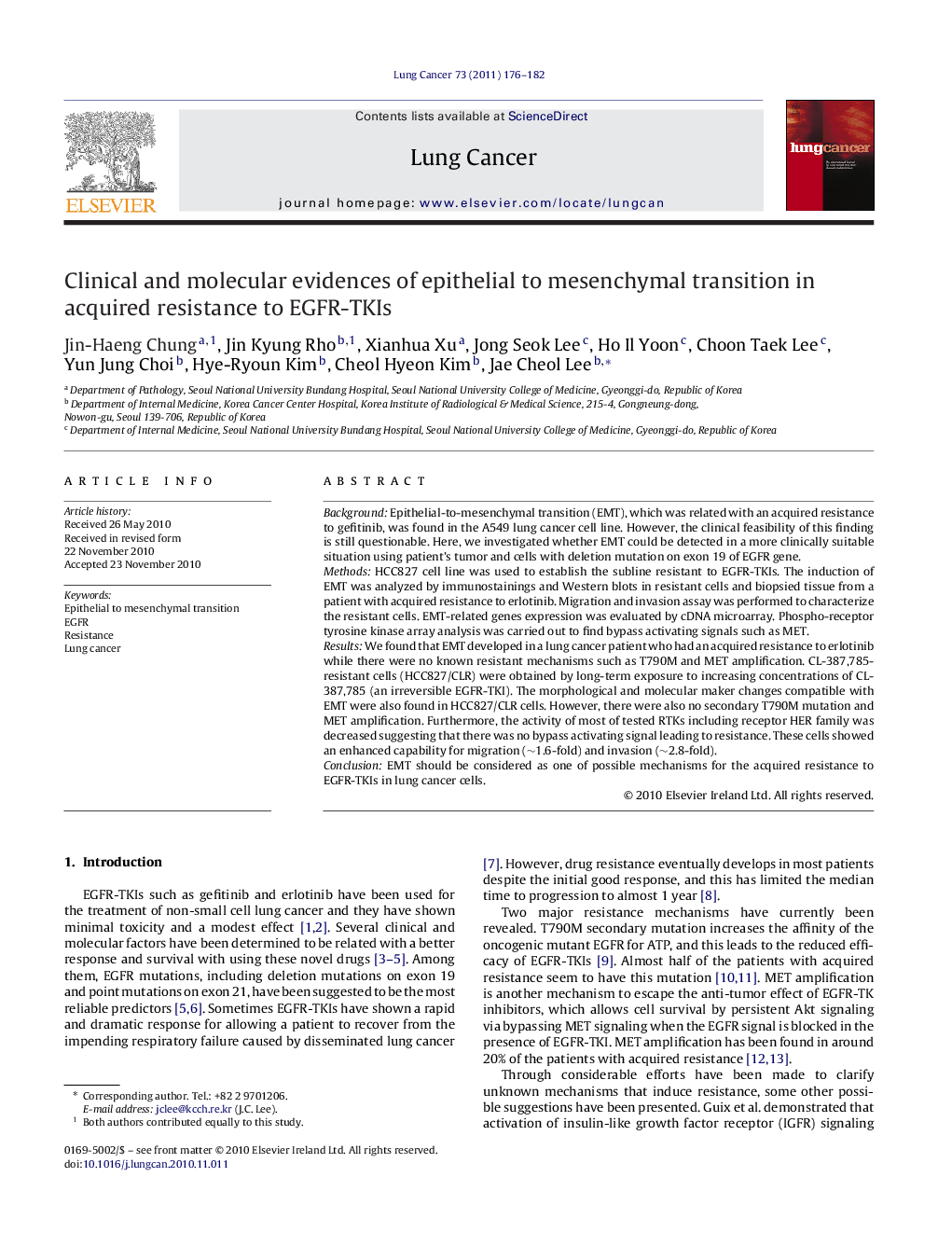| Article ID | Journal | Published Year | Pages | File Type |
|---|---|---|---|---|
| 2141184 | Lung Cancer | 2011 | 7 Pages |
BackgroundEpithelial-to-mesenchymal transition (EMT), which was related with an acquired resistance to gefitinib, was found in the A549 lung cancer cell line. However, the clinical feasibility of this finding is still questionable. Here, we investigated whether EMT could be detected in a more clinically suitable situation using patient's tumor and cells with deletion mutation on exon 19 of EGFR gene.MethodsHCC827 cell line was used to establish the subline resistant to EGFR-TKIs. The induction of EMT was analyzed by immunostainings and Western blots in resistant cells and biopsied tissue from a patient with acquired resistance to erlotinib. Migration and invasion assay was performed to characterize the resistant cells. EMT-related genes expression was evaluated by cDNA microarray. Phospho-receptor tyrosine kinase array analysis was carried out to find bypass activating signals such as MET.ResultsWe found that EMT developed in a lung cancer patient who had an acquired resistance to erlotinib while there were no known resistant mechanisms such as T790M and MET amplification. CL-387,785-resistant cells (HCC827/CLR) were obtained by long-term exposure to increasing concentrations of CL-387,785 (an irreversible EGFR-TKI). The morphological and molecular maker changes compatible with EMT were also found in HCC827/CLR cells. However, there were also no secondary T790M mutation and MET amplification. Furthermore, the activity of most of tested RTKs including receptor HER family was decreased suggesting that there was no bypass activating signal leading to resistance. These cells showed an enhanced capability for migration (∼1.6-fold) and invasion (∼2.8-fold).ConclusionEMT should be considered as one of possible mechanisms for the acquired resistance to EGFR-TKIs in lung cancer cells.
